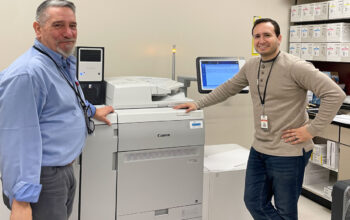
A young man is soaked with sweat as he prepares for his encore performance with his college band in the city of rock. It’s a Saturday night and the previous nights without sleep are noticeable by his wild, untamed hair and heavy bags under his eyes. As he gets on stage, the young man begins to nod his head as he strums the opening chords of The Doors’ “Peace Frog.”
Flash-forward to Monday morning a few decades later and the same ruffled hair and dark circles can be seen on a more mature history department chair, Richard Webb. Instead of spending the previous nights rocking out with his college cronies, Mr. Webb had stayed up grading long-overdue AP US History tests. Yet, even through the exhaustion, students can see the spark of excitement that lights his eyes as he lectures about social unrest in the 1960s.
When an outside viewer looks into a standard classroom setting, it’s typical to see students zoning out to a monotonous lecture. Day-dreaming about big weekend plans, these students know little of the vivacious lives of the teachers right in front of them. “I don’t really know what teachers do,” junior Jackie Cloud said. “They probably have a real life but for some reason I’m imagining them grading papers by candlelight or something.”
Many students do not realize that their own down-to-earth teacher, Mr. Webb, aspired to become a famous musician earlier in his career. “So I was in three bands within Nashville, Tennessee for a total of about seven years. And at one point we tried to make a run for it to actually be a functioning rock band and like the vast majority of rock bands we didn’t make it,” Mr. Webb said. “And then I had to get a job and pay my bills and debts and all that stuff.”
Although hard to believe, Mr. Webb said he would prefer teaching high school students to being on the road. “It’s a brutal life, you’ve got to be young, you’ve got to be in shape. So actually, I wouldn’t really want to be in a rock band right now,” he said.
However, many teachers are able to continue their hobbies while maintaining their teaching jobs. In addition to being an art teacher, Lisa Floryshak-Windman coaches speed skating in Yonkers and Shelton. In order to balance coaching with classes, Ms. Floryshak-Windman tries to work around her school schedule. “I usually plan out my lessons during the summer to help me balance both school and coaching,” she said. “It’s still really tough when I have national events, so I ask another coach to help me.”
Biology teacher Cathy Smith is also involved in a sport that many students find hard to imagine: racing cars. In addition to racing, Ms. Smith and her family own the vehicles themselves. “Considering racing cars is an expensive hobby, and it was truly a homespun family deal, it was amazing what we were able to accomplish,” she said. “I was very proud of it. We even got a pit crew of the year award and we got a sportsman of the year award one year.”
Other teachers have a harder time balancing their hobbies with school. History teacher Robert Stevenson is a cartoonist in his free time, but has trouble finding free time to draw. “I disappear from my family on vacations for a day to draw in a library or coffee shop,” he said. “The other cartoonists make fun of me for only producing one or two books a year.”
Even though Mr. Stevenson considers himself an amateur, students are surprised by all he achieves with such little time. “I do hand made printed comics to sell at art shows a couple times a year. Mine are silkscreen and look a little bit like Harvey Kurtsman’s 1950s cartoons,” he said.
Contrary to the pre-conceived idea that personal and work lives need to be separated, teachers often find that their hobbies actually enhance their teaching. “Speed-skating teaches me about physics. This helps me in my sculpture and ceramics classes because I’m able to think in 3D and analyze student work more closely.” Ms. Floryshak-Windman said.
Mr. Stevenson agreed. “My story telling comes from being able to tell a story through a comic,” he said.
And maybe that’s exactly what students need: more story-telling to break down boundaries between students and teachers. “I share a lot, probably more personal stuff then I should,” Ms. Smith said. “But I think in the long run, it lets them know that I’m a human being. That I’m not just someone out there to make their lives miserable.”
Mr. Webb agreed that communication between students and teachers is key. “When you’re with an adult or an authority figure, remember that they’re human too,” he said. “I don’t think we should be treating students like they’re bricks and mortar and they go to an institution of bricks and mortar. Institutions aren’t bricks and mortar, they’re people.”
Students and teachers seek an escape from school stress through the benefits of a hobby. “I think its beneficial for everyone to maintain hobbies outside of anything they do. Students, teachers, workers. It helps keep perspective on your work,” Mr. Stevenson said.
Teachers often find this perspective on their work by understanding that teaching is a 24/7 job. “Many times you’re taking home grading or you’re starting to think well tomorrow I’ve got to do this and I want to get to that point by the end of this week,” Ms. Smith said. “Your mind is always thinking about school. So you do need to have some diversions. Just like students need to have breaks, so do the teachers.”
httpv://www.youtube.com/watch?v=abu3DuptRTo&feature=plcp&context=C41e9663VDvjVQa1PpcFM4Lfon7BgQM0kozeT3AR_fA_dEYsEoE2k%3D



